What are lymphatic system?
Introduction of the lymphatic system
The lymphatic system also called the lymphoid system, is an organ system in vertebrates that is part of the immune system and complementary to the circulatory system. The lymphatic system consists of a network of vessels, nodes, and ducts that collect and circulate excess fluid in the body. Throughout the body, there are 500 to 600 numbers of lymph nodes. due to an increase of lymphatic fluid, bacteria, or other organisms and immune system cells these nodes swell in response to infection.
The immune system is a part of the lymphoid system. It also maintains the fluid balance and performs a role in absorbing fats and fat-soluble nutrients. The major parts of the lymph tissue are located in the thymus gland, lymph nodes, bone marrow, spleen, and tonsils. lymphatic tissue present in the heart, lungs, intestines, liver, and skin.
Functions of The lymphatic system
The main functions are as follows:
Fluid balance
The lymphatic system returns a profusion of proteins and fluids from the tissues that cannot return through the blood vessels. The fluid frequently collects in the minute spaces surrounding cells, which are known as the interstitial spaces. Miniatures lymph capillaries connect these spaces to the lymphatic system. Around 90% of the plasma that reaches the tissues from the arterial blood capillaries comes back through the venous capillaries and veins. The remaining 10% proceeds through the lymphatic system. A disruption of the liquid processing that can result in localized swelling, is known as lymphedema.
Absorption
The lymphatic system takes part in a key role in intestinal function. It accommodates transporting fat, fighting infections, and removing excessive fluid. The small intestine’s gut membrane contains a minute finger-like protrusion called villi. Each villus contains a minute lymph capillaries known as lacteals. These absorb fats and fat-soluble vitamins to form a milky white liquid called chyle. This liquid contains lymph and emulsified fats, or free fatty acids. It transports nutrients indirectly when it reaches venous blood circulation. Blood capillaries take up another nutrient directly.
The immune system
The third function of lymph nodes is to preserve the body from exposure to potentially hazardous microorganisms, such as infections. The immune system produces and releases white blood cells and further immune cells to fight against microbes and other substances. Transporting and removing the waste products and abnormal cells from the lymph – The lymphatic system filters the waste products and unhealthy cells from the lymph and eliminates them from the body. Filtering out the toxins – Toxins in the blood are often selectively filtered by the lymph nodes.
Physiology of the Lymphatic System
The important components of the lymphatic fluid are water and protein present in the extracellular spaces. In a standard state, the lymphatic system transports this fluid back to the venous circulation. The amount of liquid transported is the lymphatic load, and the amount of fluid the lymphatic system can transport is called transport capacity. When the balance in the interstitium is disrupted, whether, by a raised lymphatic load or a decreased transport capacity, lymphedema can develop.
The Lymphatic load is increased when the venous system is not able to transport the required amount of liquid, which can occur in a patient with venous insufficiency. Transport capacity is affected when the structures of the lymphatic system are compromised, for example, following surgery to remove lymph nodes in a patient with cancer.
Drainage of the lymphatic system
Larger lymph vessels ultimately form the right lymphatic duct and the thoracic duct. The right lymphatic duct opens into the right subclavian vein and the thoracic duct opens into the left subclavian vein. The thoracic duct evacuates the lymph from more than two third of the tissue spaces in the body.
How lymphatic system fight against the infection
The lymphatic system produces white blood cells, those cells are known as lymphocytes. There are classified into two categories of lymphocytes – T cells and B cells. They both proceed through the lymphatic system. As they reach the lymph nodes, they come into contact with viruses, and bacteria, including the foreign particles in the lymphatic fluid.
Following contact, lymphocytes form antibodies and start to protect the body. They can also produce antibodies from memory if they have previously encountered the specific pathogen in the past. The lymphatic system and the movement of lymphocytes form part of the body’s adaptive immune response. These are highly specific as well as long-lasting responses to particular pathogens.
Anatomy of the lymphatic system
The lymphatic system is composed of lymphatic vessels, lymphatic ducts, lymphatic nodes, and other tissues throughout the body. The lymphatic system has many parts, which comprise: Lymph, or lymphatic fluid, which is the collection of additional fluid and other substances drained from the cells and tissues. Other substances may include – proteins, minerals, Fats and nutrients, Damaged cells, Cancer cells, and Foreign invaders such as bacteria and viruses. The three main parts of the lymphatic system include lymph nodes, lymphatic vessels, and lymphatic organs that contain lymphoid tissues. Lymphatic vessels are structures that absorb the fluid that diffuses from blood vessel capillaries within the surrounding tissues.
Lymph nodes: These are bean-shaped glands in the neck, armpit, and groin area that are superintended for filtering out viruses, bacteria, and fungi. They can also be established along with the lymphatic pathways in the chest, abdomen, and pelvis, where they filter the blood. They produce and store the additional white blood cells and are connected by the lymphatic vessels.
Lymphatic vessels – Unlike the blood vessels, lymphatic vessels only transfer fluid away from the tissues. Lymph capillaries join to form a lymphatic vessel. Lymphatic vessels accumulate the interstitial fluid and transport it to the lymph nodes. These nodes filter out the damaged cells, bacteria, and other foreign bodies. Once this fluid passes out of the lymph nodes, it travels to the enormous vessels and eventually the lymph ducts, which converge in the thoracic duct at the bottom of the neck. The thoracic duct restores filtered lymph into the bloodstream.
The major lymphatic vessels include – the thoracic duct, which originates in the lower part of the spine and collects the lymph from the pelvis, abdomen, and lower chest. The lymphatic duct on the right side of the neck, chest, and arm collects lymph and empties it into a large vein near the right side of the neck. Organs associated with the lymphatic system include – The spleen filters and stores the blood while also producing the white blood cells that fight infection and disease. Thymus – This organ produces a type of white blood cell that fights foreign organisms.
Tonsils and adenoids Pathogens can be collected from food and the air. Bone marrow is responsible for the manufacture of white blood cells, red blood cells, and platelets. Peyers patches: Line your small intestines and detect and destroy bacteria in the intestine. Tumors and scar tissue from radiation and surgery can lead to damage and lesion to the lymphatic system. Lymphedema can also take place after treating the cancers of the head and neck. It can cause inflammation of the face, eyes, neck, and lips.
Lymphoid organs
Bone marrow is a sponge-like network found inside the bones.
Thymus. The thymus is located beyond the breastbone above the heart.
Lymph nodes are minute bean-shaped tissues found along the lymphatic vessels.
Spleen: It is the enormous lymphatic organ in the body.
Tonsils, mucous membranes.
Lymph vessels are not available in the following
- Superficial layers of skin.
- Central nervous system.
- Cornea.
- Bones.
- Alveoli of lungs.
Rate of the lymphatic flow
About 120 mL of lymphatic flows into the blood per hour. Out of this, about 100 mL/hour travels through the thoracic duct and 20 mL/hour travels through the right lymphatic duct.
Factors Increasing the Flow of Lymph
- The flow of lymphatic fluid is promoted by the increase in –
- Interstitial fluid pressure.
- Blood capillary pressure.
- The surface area of lymph capillary by means of dilatation.
- Permeability of lymph capillaries.
- Functional activities of tissues.
How lymph nodes swell
Lymph nodes can swell for two frequent reasons: a reaction to an infection and a direct infection of the lymph nodes. In the former, the lymph nodes respond when coming into contact with foreign materials from infected tissue. Direct infection can cause lymphadenitis. In this, infection causes inflammation in the lymph nodes, and an individual will require antibiotic treatment. Most people who have inflated glands with a cold or flu do not need to contact a doctor.
However, an individual should seek medical counseling if: A swollen lymph node stays for longer than 2 weeks. A swollen lymph node feels resistant or fixed in places. Welling accompanies a fever, night sweats, or unexplained weight loss. Inflated lymph nodes can be a symptom of numerous conditions:
- Glandular fever: Also called infectious mononucleosis, or mono, this is a viral infection that can cause long-lasting swelling, a sore throat, and fatigue.
- Tonsillitis: This is more frequent in children than in adults. It happens when the lymph nodes at the back of the mouth are fighting an infection, usually viral but sometimes bacterial.
- Pharyngitis: A few people refer to this infection as “strep throat.” It results from a Streptococcus bacterial infection, and it can cause lymph nodes to swell.
The situation of lymph vessels
Lymph vessels are located in the following regions:
- The Deeper layers of skin.
- Subcutaneous tissues.
- The Diaphragm.
- The Wall of the abdominal cavity.
- The Omentum.
- Linings of the respiratory tract, except alveoli.
- Linings of the digestive tract.
- Linings of the urinary tract.
- Linings of the genital tract.
- The Liver.
- The Heart.
Lymphoma
A neoplasm that initiates in the lymphatic system is known as lymphoma. It is the most important lymphatic disease. Hodgkin’s lymphoma affects B lymphocytes, a variety of white blood cells. People with Hodgkin’s lymphoma will have a certain variety of lymphocytes present in their blood called Reed-Sternberg cells. Non-Hodgkin’s lymphoma includes a variety that does not involve these cells. Hodgkin’s lymphoma can occur across the lymphatic system. nevertheless, it most commonly affects lymph nodes in the superior part of the body, such as the neck, chest, and under the arms. Non-Hodgkin’s lymphoma can rise from B or T lymphocytes but is most frequent in B lymphocytes. There are many varieties of non-Hodgkin lymphomas. These can differ in their location and how aggressive their growth is.
Lymphedema
If the lymphatic system does not work properly, liquid may not drain effectively. As the fluid accumulates, this can lead to swelling in an arm or leg. Lymphedema is an abnormal proliferation of protein-rich fluid in any part of the body as a result of a malfunction in the lymphatic system. The epidermis may feel tight and hard, and skin problems may occur. In some cases, fluid may dribble through the skin. For the preliminary stage, lymphedema can be treated with nonsurgical interventions, including medication, a healthy diet, and manual compression. For progressed-stage lymphedema, surgical intervention may be recommended. Lymphedema occurs as a response to a blockage in the lymphatic system. This is most frequently caused by a traumatic circumstance, such as sports injuries or deep cuts and bruises, as a consequence of the surgery or cancer treatment. More rarely, lymphedema can happen as a birth defect or as a symptom of infection. Obstruction can terminate from surgery, radiation therapy, injury, a condition called lymphatic filariasis, or a congenital disorder.
The Severity of lymphedema
- Pitting edema. Pressure on the edematous tissues with the fingertips causes an indentation of the epidermis that persists for several seconds after the pressure is removed. This reflects significant but short-duration edema with little or/and no fibrotic changes in skin or subcutaneous tissues.
- Brawny edema. Pressure on the edematous areas feels harder with palpation. This reflects an additional severe form of interstitial swelling with progressive, fibrotic changes in subcutaneous tissues.
- Weeping edema. This represents the major frightful and long-duration form of lymphedema. Fluids dribble from cuts or sores; wound healing is significantly impaired. Lymphedema of this severity happens almost exclusively in the lower extremities.
For the Prevention of Lymphedema
For Maintaining Proper Hygiene
- wash the epidermis of the affected arm every day and apply the lotion. When drying the arm, be kind but thorough. Take genuine care of the fingernails and keep away from cutting the cuticles. wash all the cuts with soap and water, and then apply the antibacterial ointment and a sterile dressing.
For Staying Fit
- Perform exercises regularly to improve drainage, but first, consult with your doctor or physical therapist.
- Eat a well-balanced, low-sodium diet. Keep the arm elevated when possible.
For Taking Precaution with Everyday Activities
- Protect your fingers from needle pricks and sharpened objects. Use a thimble when sewing. keep away vigorous, repetitive movements against resistance, such as scrubbing, pulling, or pushing, along with the affected arm. keep away from sunburns and other burns to the affected arm. Use an electric shaver when shaving the underarms.
Stages of Lymphedema
Stage 0-Latency Stage
- No outward swelling was noted.
- Essentially asymptomatic with occasional reports of heaviness in the extremity Despite reduced transport capacity, the body is still able to accommodate the lymphatic load.
Stage I-Reversible Stage
- Elevation reduces swelling No tissue fibrosis.
- Swelling is soft or pitting.
Stage II-Spontaneously Irreversible
- Fibrosis of tissue; brawny, hard swelling.
- Swelling is no long-lasting pitting.
- Positive Stemmer sign.
- Frequent infections may occur.
Stage III-Lymphostatic Elephantiasis
- Positive Stemmer sign.
- Significant increase in limb volume.
- Typical epidermis changes were noted (hyperkeratosis, papillomas, deep skin folds).
- Bacterial and fungal infections of the epidermis and nails are more common,
Lymphedema Diagnosis
There are no particular diagnostic tests for lymphedema. The doctor will accomplish the medical history and a physical examination. The
the medical history may comprise questions regarding the following:
- Past surgeries
- Problems following the surgeries
- The onset of symptoms (When did the swelling appear)
- history of edema (severe swelling)
- Current medications
- further medical conditions, such as high blood pressure, heart disease, or diabetes.
- Imaging tests may also be used to assist in the diagnosis and monitor lymphoedema.
- These include:
- a lymphoscintigram – where you are injected with a radioactive dye that can be tracked by the scanner; this shows how the dye moves through your lymphatic system and can check for any blockages
- an MRI scan – The strong magnetic field and the radio waves are used to produce detailed images of the inside of your body.
- an ultrasound scan – high-rise frequency sound waves are used to produce an image of the inside of your body. It can assist in finding obstructions within the lymphatic
- system and vascular systems.
- a CT scan can reveal blockages in the lymphatic system. X-rays and a computer generate detailed images of the lymph nodes.
- These scans can be used to generate a clearer picture of the affected tissue.
Lymphedema signs and symptoms
- include swelling of part or all of the leg or the arm, including fingers or toes.
- A feeling of heaviness or tightness, shortness of breath.
- Restricted range of motion.
- Recurring infections.
- Hardening and thickening of the skin (fibrosis).
- Fever, Night sweats.
Treatment of lymphedema
- Exercise assists to restore flexibility and strength, and it improves drainage. particular exercises will be recommended by your doctor and /or physical therapist.
- A bandage – Wearing a customized compression of the sleeve or the elastic bandage may help to prevent an accumulation of the liquid
- arm pump – Applying an arm pump frequently helps to increase the fluid flow of the lymphatic vessels and keeps fluid from collecting in the arm.
- Diet – Eating a well-balanced diet and /or controlling the body weight is a main part of the treatment.
- Keep the arm raised. Keeping the arm raised above the level of the heart, whenever possible, allows gravity to help the drainage of the collection of fluid.
- Infection Prevention – It is important to follow preventive measures, such as good epidermis care, or to preserve the affected arm from infection and breakdown of the epidermis.
For the Surgical Treatment of the Lymphedema
Once the lymphedema has moved forward to stages 3 or 4, surgical intervention may be recommended. the Surgical options consist of both physiological and excisional procedures. Both procedures aim to preserve the lymphatic flow. However, the physiological procedures involve rewiring the lymphatic system within the limb, while excisional the procedures focus on removing diseased tissue.
The Physiological procedures (which may be recommended for stages 3 and 4). The Vascularized lymph node transfer. The surgeon transfers the healthy lymph nodes to the affected area and rewires the lymphatic system to reduce the swelling. Lymphaticovenous anastomosis (also referred to as lymphovenous bypass). The surgeon rewires the lymphatic system by connecting the lymphatic channels directly to minute veins nearby. This is an outpatient procedure with very minute and minimal incisions and very little blood loss. Excisional Plan of action (may be recommended for stages 3, 4, or 5). Liposuction, The affected tissue can be removed. The Charles procedure – The surgeon will remove the affected tissue and use a part of it as a skin graft to repair the area. This is an additional invasive procedure, typically recommended for stages 4 and 5.
Types / or diseases and disorders of the lymphatic system
- Hodgkin’s Disease/Hodgkin’s Lymphoma, Hodgkin’s lymphoma is a type of cancer of the lymphatic system. It can start almost anywhere in a body. It is believed to lead to HIV, Epstein-Barr Syndrome, age, and family history. Symptoms include weight gain, fever, inflated lymph nodes, night sweats, itchy skin, fatigue, chest pain, coughing, or trouble swallowing.
- Non-Hodgkin’s Lymphoma, Lymphoma is usually cancer. It is caused by the body’s producing too many abnormal white blood cells. It is not different than Hodgkin’s Disease. Symptoms usually include painless, enlarged lymph nodes or nodes in the neck, weakness, fever, weight loss, and anemia.
Lymphadenitis – it is a lymph node infection caused by a virus, bacteria, or fungi. Symptoms include swelling or redness around the lymph node.
Lymphocytosis – it is a high lymphocyte count. It could be caused by an infection, blood cancer, lymphoma, or autoimmune disorders that are accompanied by chronic swelling.
For the improvement of the lymphatic system
Exercise is done Regularly, exercise is the key to a healthy lymphatic system, Alternative Treatments like – Hot and Cold Showers. Using dry brushing, Drinking pure water, and Wearing Tight Clothes are Not Recommended, Breathe deeply. Eat foods that promote lymphatic flow.
The lymph system is stimulated by gravity, muscle contraction (exercise), hydrotherapy (alternating hot and cold water on the skin), breathing, and also lymph drainage therapy, and massage. Regular physical exercise is a great way to get your lymphatic system pumping and detoxify your system of waste. Jumping, walking, stretching, yoga, Pilates, and other moderate exercises are done regularly will improve the state of your lymphatic system. Drink plenty of water to keep your lymph system moving. keep away unnecessary exposure to cleaning products and pesticides because their harmful chemicals can get lodged in the system, making it harder for them to filter.

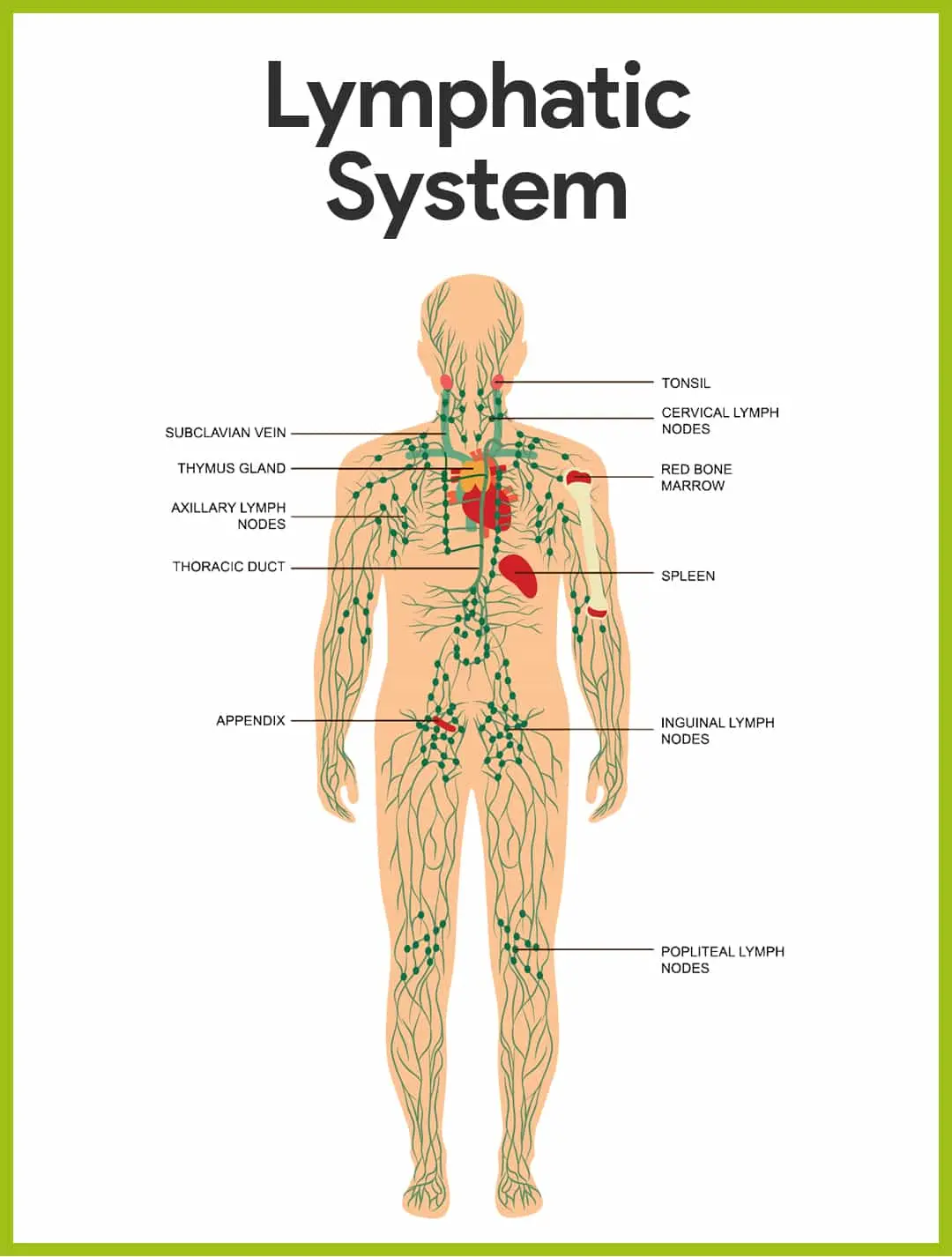

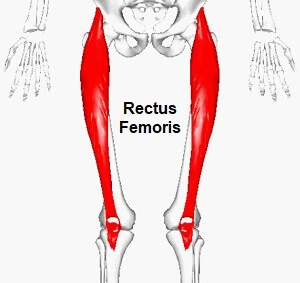
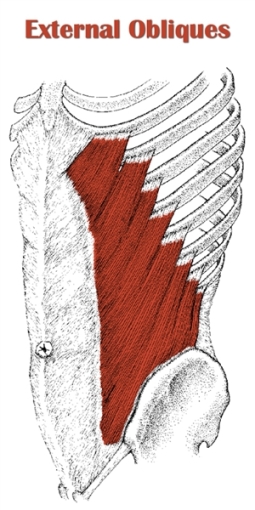
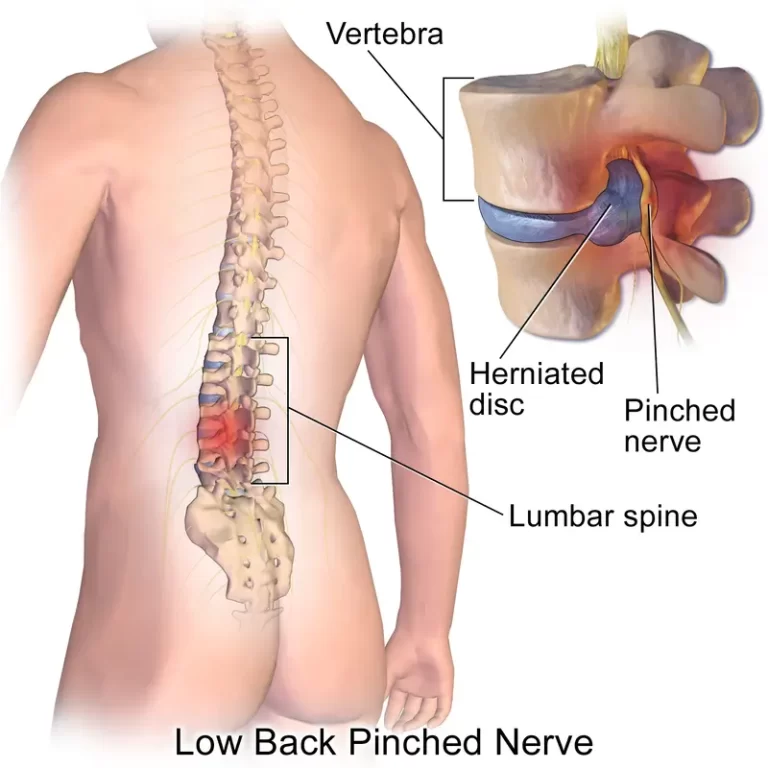
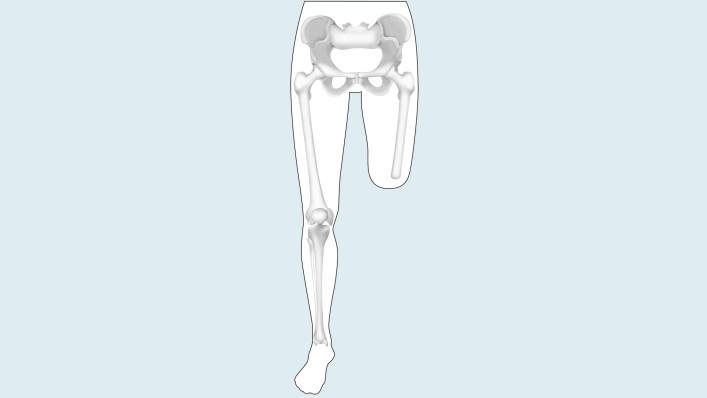

2 Comments